In a magical version of 1910 New York, any child can brew a magical potion—if they have the money.
Alyssa Colman’s middle-grade fantasy “The Gilded Girl” reimagines Frances Hodgson Burnett’s “A Little Princess” in a magical early-1900s New York City, where twelve-year-old Emma Harris’s privileged life at Miss Posterity’s Academy for Practical Magic collapses after her father’s sudden death. Stripped of her wealth, Emma becomes a servant alongside Izzy, a fiery maid determined to defy the system that “snuffs” magic from poorer children. Together, they form an unlikely alliance: Emma shares her knowledge of elite magical rituals, while Izzy teaches survival skills in their harsh new reality. The girls navigate sentient libraries, mischievous house dragons, and a rigid class divide, all while hiding their plan to “kindle” their magic before their thirteenth birthdays. This Charlotte Huck Award-winning novel, praised for its heartfelt exploration of friendship and justice, blends historical events like the 1906 San Francisco earthquake with a magical class struggle, earning starred reviews from Kirkus and Booklist.
The Gilded Girl shines as a tool for discussing SDG 4: Quality Education and SDG 10: Reduced Inequalities. The magic system where only wealthy children access “kindling” mirrors real-world educational disparities, inviting students to analyze how socioeconomic status shapes opportunity. Educators can use Emma and Izzy’s partnership to spark debates on equity: Why do some communities lack resources for quality education? How can systemic barriers be challenged? Both girls demonstrating Principled action and Risk-taking as they risk everything to fight for fairness.
Teachers might design activities like mapping parallels between the novel’s magic hierarchy and modern school funding gaps. Emma’s growth from oblivious heiress to empathetic advocate models how privilege can fuel change, while Izzy’s grit underscores the resilience of marginalized voices. By tying the girls’ quest to real SDG targets, this book empowers students to brainstorm actionable solutions, such as organizing community resource drives or advocating for inclusive programs in their own schools.

